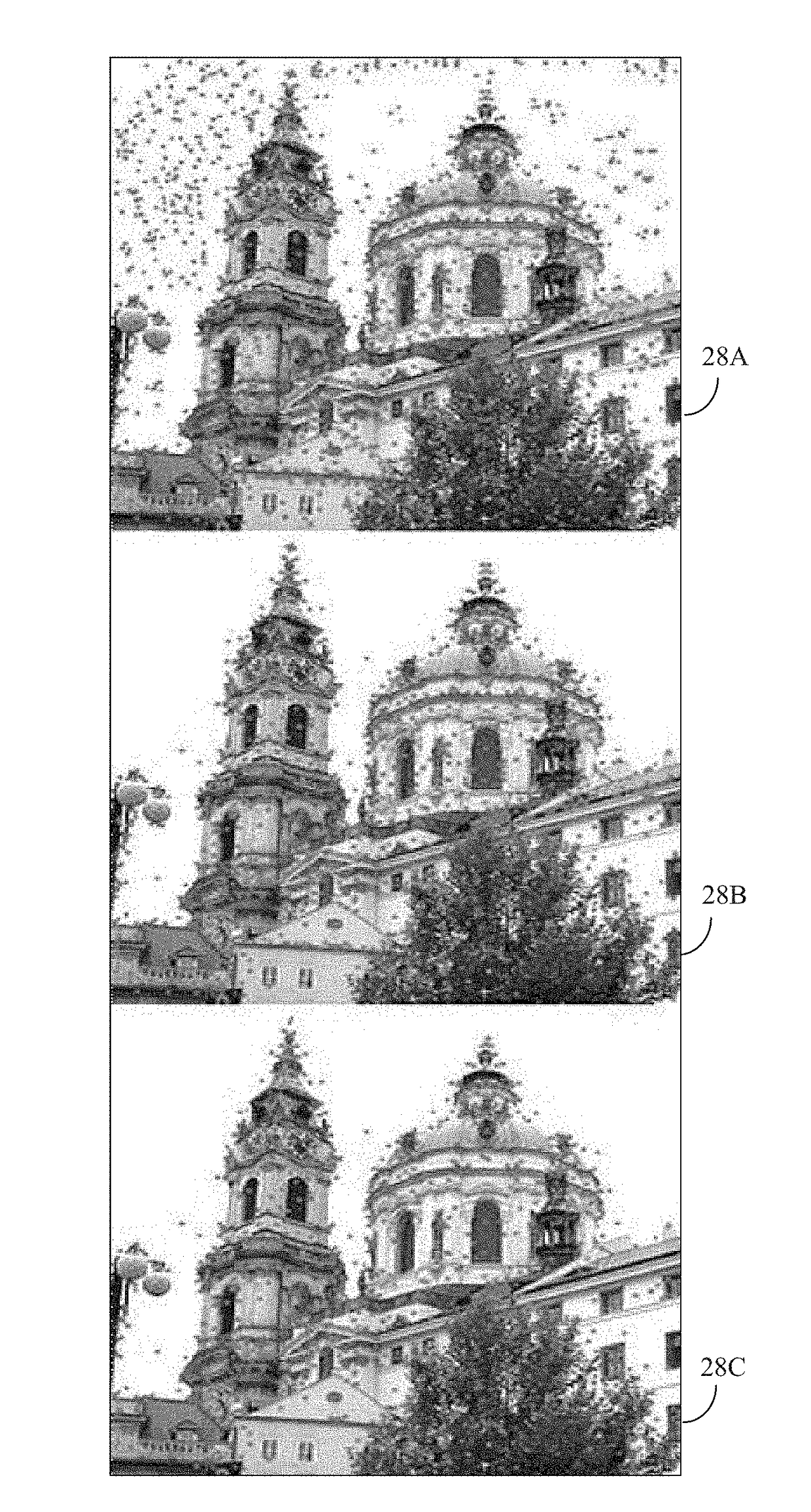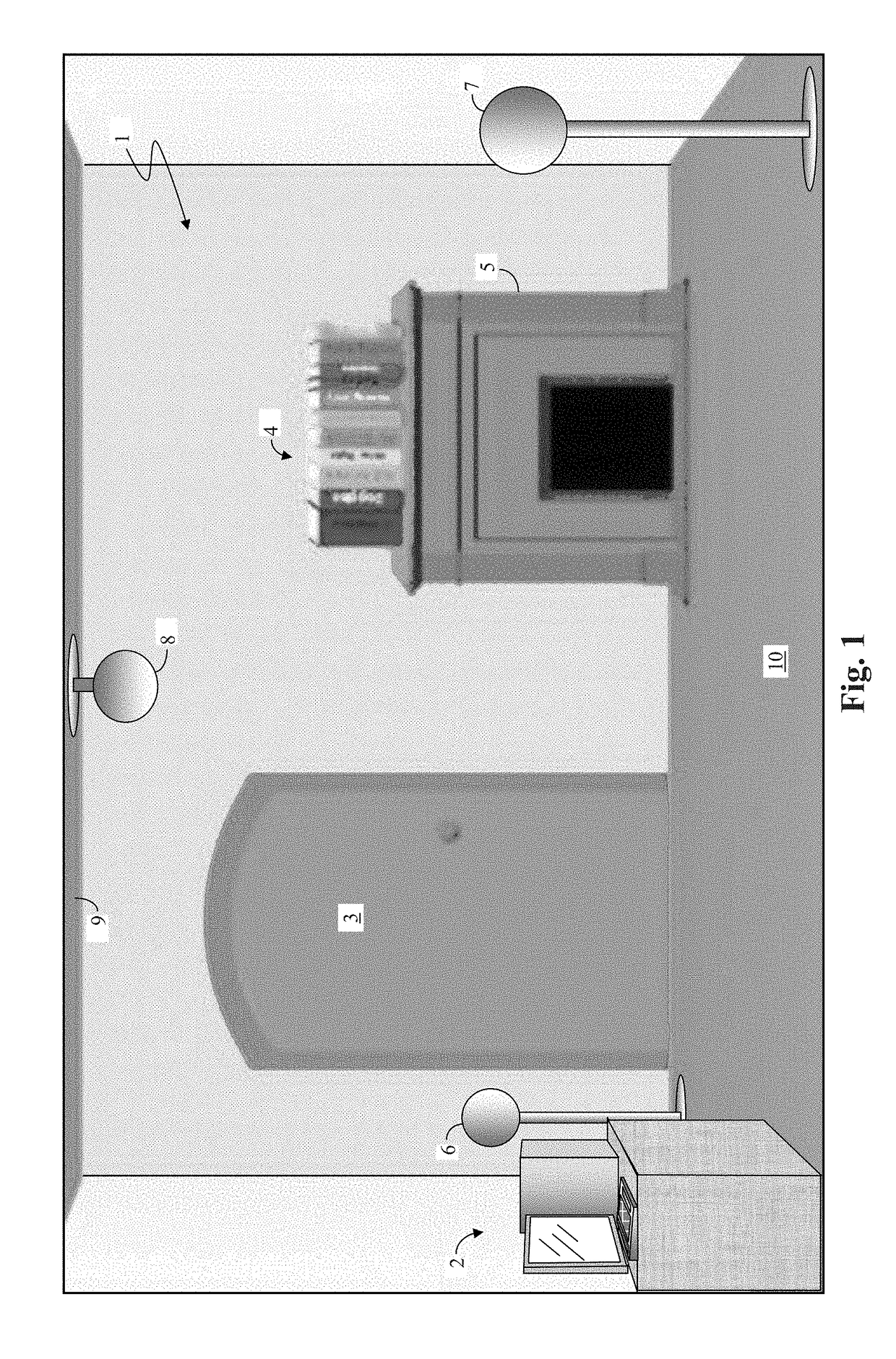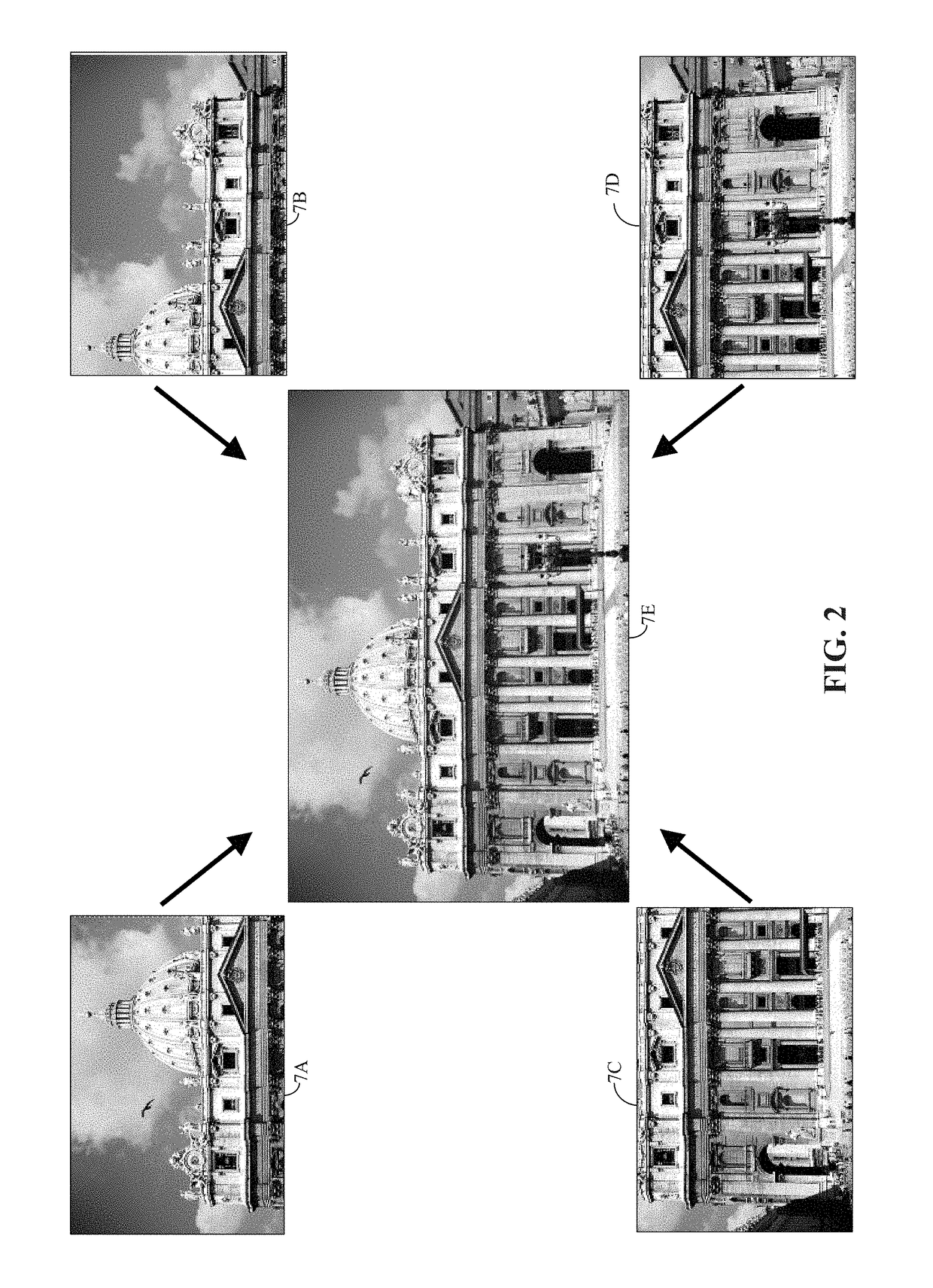Cleaning of Depth Data by Elimination of Artifacts Caused by Shadows and Parallax
- Summary
- Abstract
- Description
- Claims
- Application Information
AI Technical Summary
Benefits of technology
Problems solved by technology
Method used
Image
Examples
Embodiment Construction
[0066]The present, real-time, artificial / augmented reality generating system / method is herein termed a “Holocam Orb System” because of its use of what are herein termed “Holocam Orbs”, each of which is an independent data gathering device (i.e. independent sensing apparatus incorporating multiple sensors) that gathers (real-life) scene information (preferably including audio data and 2D / 3D imaging data) from its respective field-of-view (FOV). Information from multiple Holocam Orbs is combined within a computing system (e.g. a general purpose computer or a specialized computer or other data processing device) to create a multi-view 3D artificial reality scene that may surround a viewer standing within the scene.
[0067]For example, FIG. 1 illustrates an exemplary, real-world scene consisting of a room 1 with a computer 2, a door 3, and books 4 on a chimney 5. Additionally, three figuratively illustrated Holocam Orbs 6, 7, and 8 are shown distributed within room 1. Holocam Orb 6 prefer...
PUM
 Login to View More
Login to View More Abstract
Description
Claims
Application Information
 Login to View More
Login to View More - R&D
- Intellectual Property
- Life Sciences
- Materials
- Tech Scout
- Unparalleled Data Quality
- Higher Quality Content
- 60% Fewer Hallucinations
Browse by: Latest US Patents, China's latest patents, Technical Efficacy Thesaurus, Application Domain, Technology Topic, Popular Technical Reports.
© 2025 PatSnap. All rights reserved.Legal|Privacy policy|Modern Slavery Act Transparency Statement|Sitemap|About US| Contact US: help@patsnap.com



